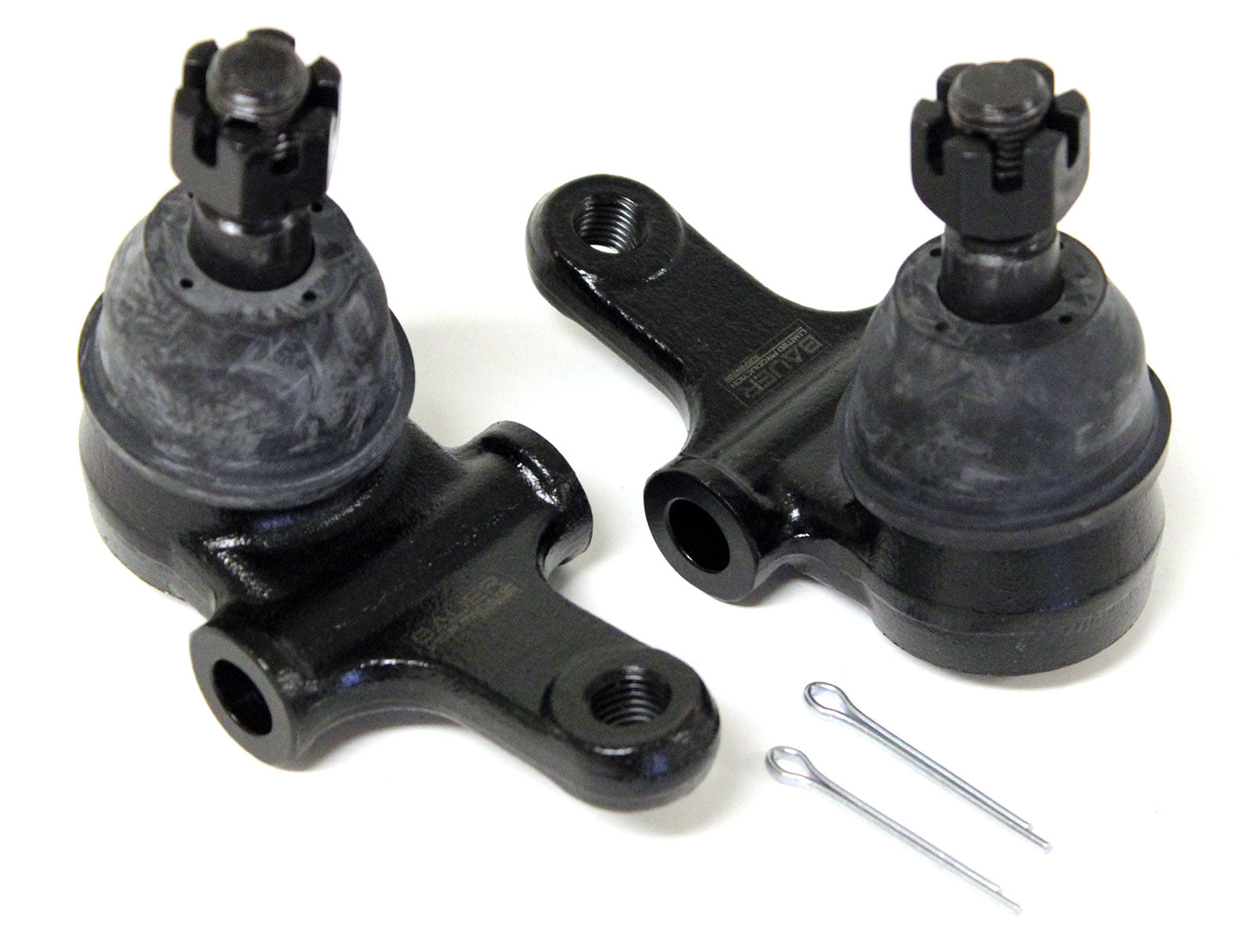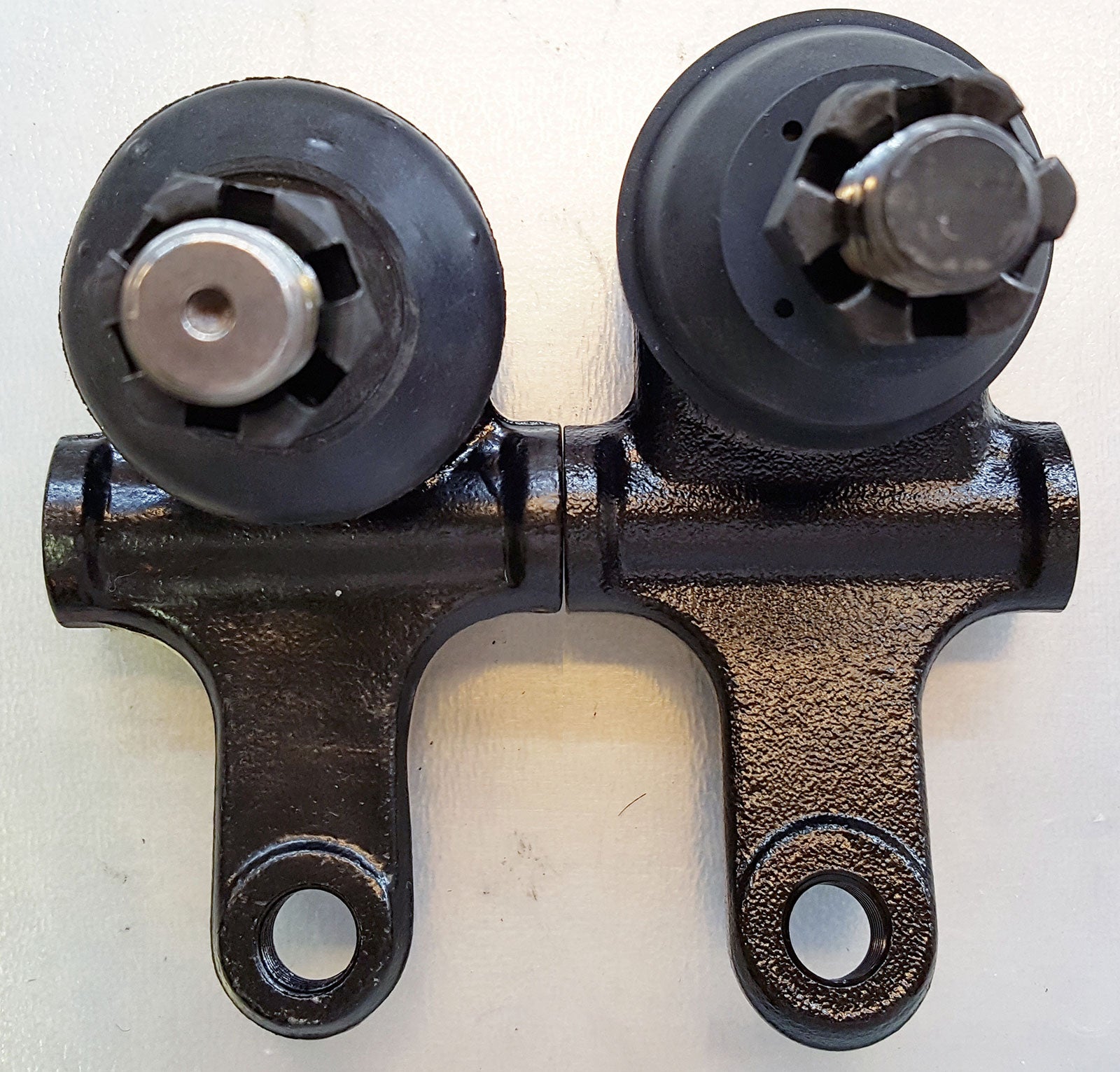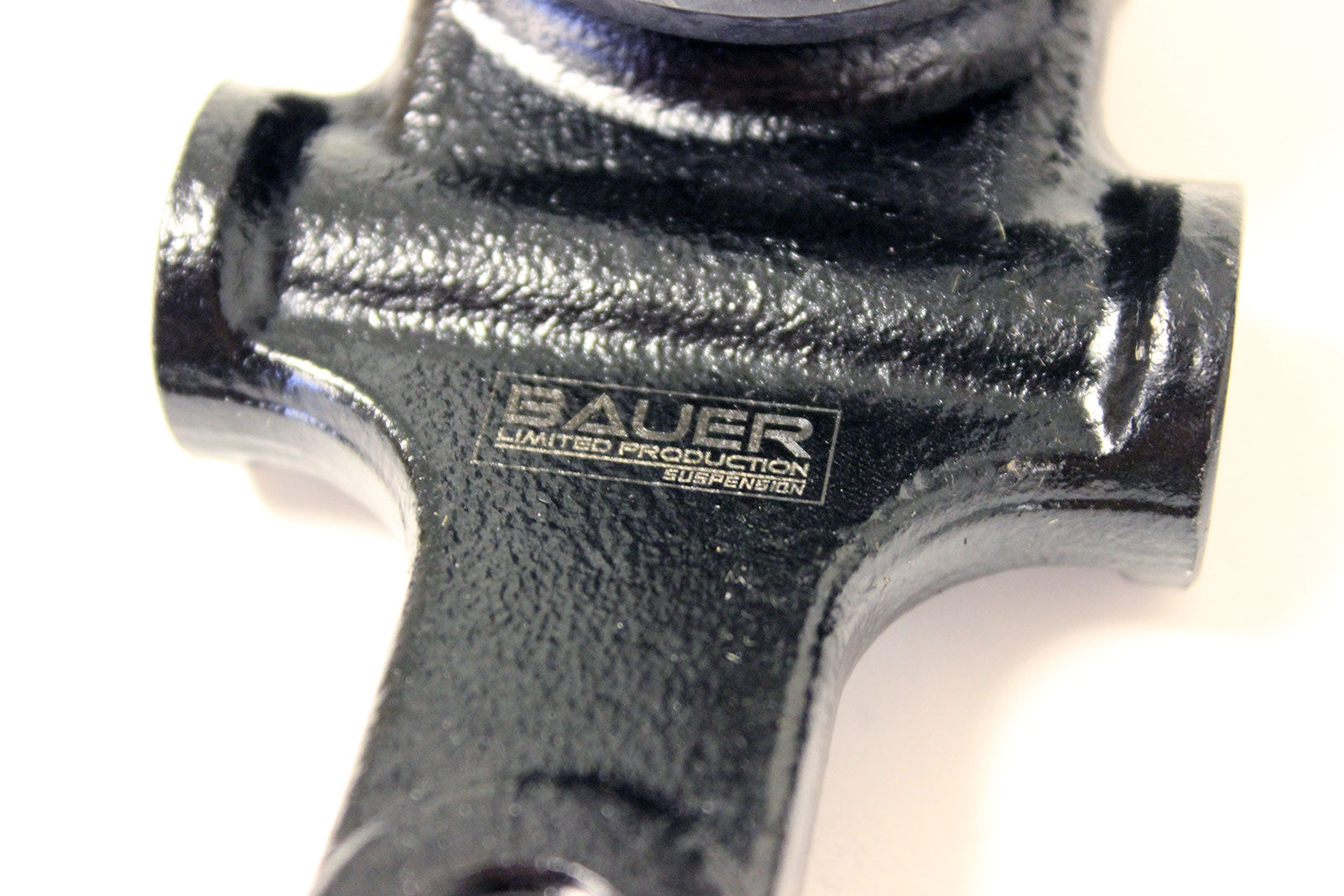Extended lower ball joints for NA/NB
Extended lower ball joints for NA/NB
Couldn't load pickup availability
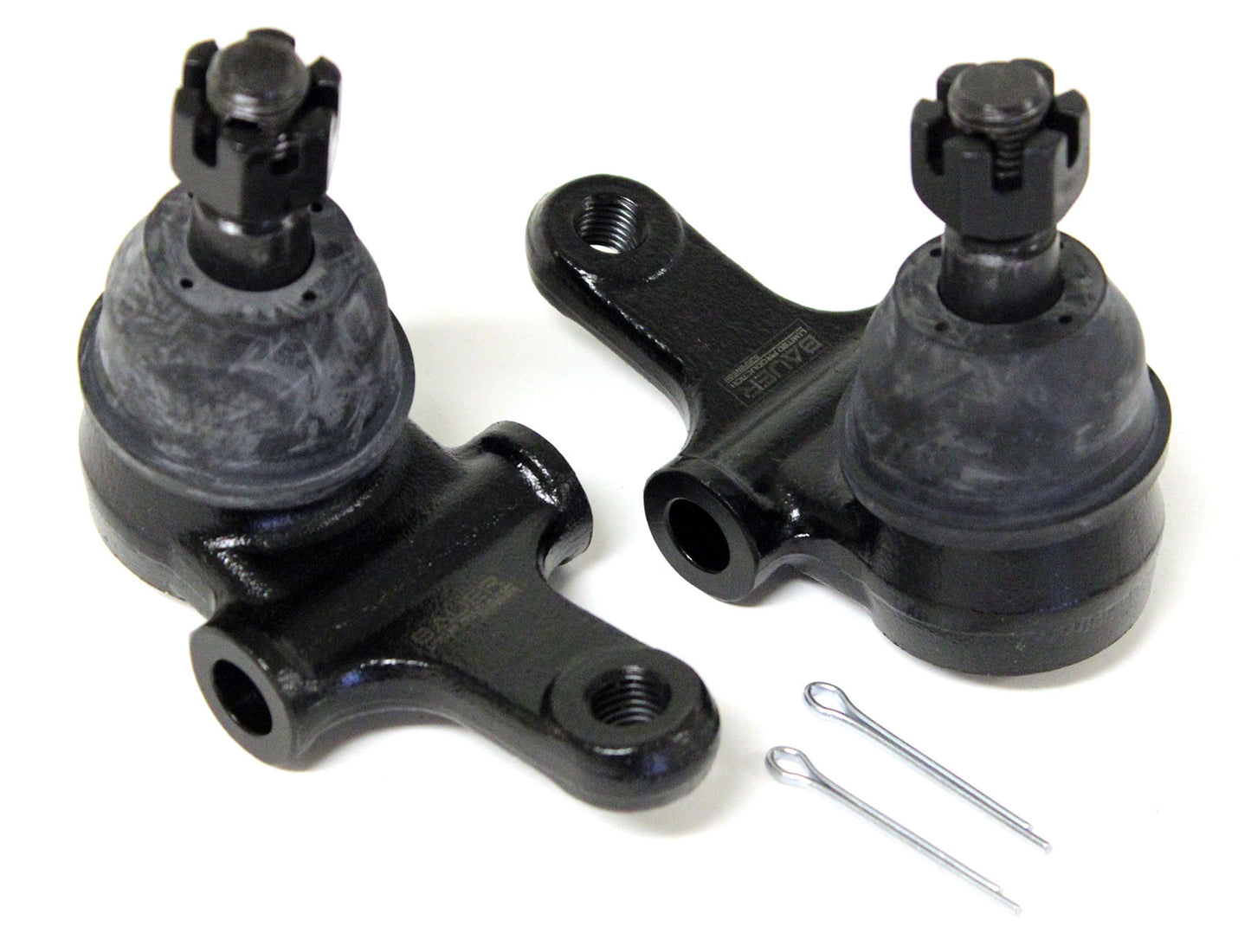
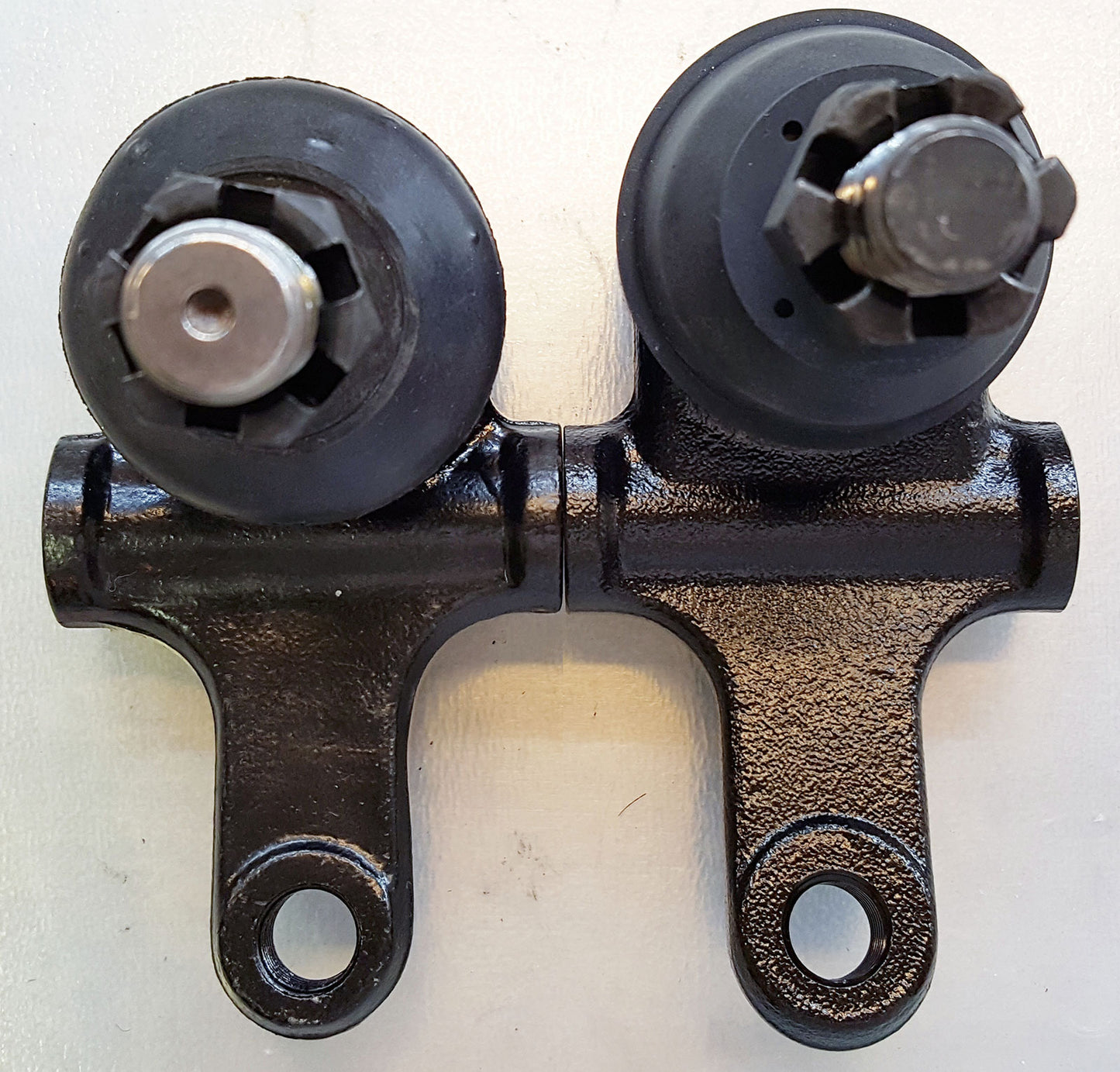

Collapsible content
Description
Legal for NASA Spec Miata! The NASA rulebook will specify a Flyin' Miata part number.
Sold as a pair. One pair is needed per car.
Looking for more front camber, but are frustrated with slipping bushings or hampered by minimal spring clearance? Don't want to run a too-low ride height just to get enough negative camber? Here's your solution.
This extended lower ball joint bolts in place of the factory unit, but adds 3° of negative camber by pushing the bottom of the tire outboard. You'll gain clearance instead of losing it, and there's no chance they'll slip. Perfect for autocrossers or anyone looking to get as much negative camber as possible. If you want, you can even swap back and forth between these and stock units to change from street to track alignment without touching your alignment cams. At stock ride height, you'll be able to run between -.5° and -3.5° of camber.
With a forged body, they're stronger than OE parts. Made by the wizards at Bauer LTD and will fit all NA or NB Miatas. Includes the nut.
Be aware that the late NB upper control arms have some extra bracing that can rub on the shock body with certain alignment settings. After installing these ball joints and realigning your car to the desired specifications, please check your suspension for clearance.
Legal for SCCA STR and STS. Legal for NASA Spec Miata. +2 points for NASA TT/PT.
Instructions
Instructions are not currently available.
Shipping
What does it fit?
Emissions
Emissions do not apply.
Warranty
1 year
SKU
If you want to add the r-package tie rod end "package" note that it isn't a "package" as you would think, it's only one. Don't click the check box, go to the sub-page and add two to your cart or be disappointed on front end rebuild day. Otherwise competitive pricing, fast shipping at a reasonable price. Have yet to install because I'm now waiting on a tie rod end I'd assumed I'd already purchased. On mobile; may be better for computer users.
Note from FM: thanks for the feedback. We've changed the description to avoid this problem in the future. Sorry about the trouble.
Was extremely satisfied with the ammount of adjustment these gave me. without me needing to slam the front of my car to acheive my camber goals. However i installed these a little over a year ago and 1 side already has 3/8 of a inch of play and the other almost 1/2 a inch of play. I did what i could by adding grease fittings early in their life to try and extend the longevity but less then 10k miles and no more then 2 small track days later they need to be replaced.
Note from FM: Mario, we did have some problems with the early ones loosening up. Please contact us.
I was maxed out at -1.8º of camber up front on my FM springs and Konis yellows. I needed more camber to reduce sidewall wear at autocross. These ball joints look to be very high quality and they bolted right up. I was able to hit my camber targets and am no longer rolling over onto my sidewalls at autocross!
A couple tips from my install experience: Go straight to a ball joint separator. The pickle fork I had wasn't the right size or shape. 30 minutes and no success with the pickle fork vs. a minute with the ball joint separator. The other tip is to install the inboard bolt first. I tried getting it threaded when I had the outboard bolts loosely threaded and it was impossible to get lined up right.
I was maxed out at -1.8� of camber up front on my FM springs and Konis yellows. I needed more camber to reduce sidewall wear at autocross. These ball joints look to be very high quality and they bolted right up. I was able to hit my camber targets and am no longer rolling over onto my sidewalls at autocross!
A couple tips from my install experience: Go straight to a ball joint separator. The pickle fork I had wasn't the right size or shape. 30 minutes and no success with the pickle fork vs. a minute with the ball joint separator. The other tip is to install the inboard bolt first. I tried getting it threaded when I had the outboard bolts loosely threaded and it was impossible to get lined up right.
These ball joints sit about 5.5mm further out than the OEM ball joints. The total travel of an eccentric suspension adjusting bolt is just over 1cm or around 11mm, full travel, from one side to the other. So the displacement of the center of rotation of the ball joint is approximately HALF of the full range of travel of the adjusting eccentrics. These dimensions are not listed anywhere in the vendor literature. Since this is necessary to estimate the new position of the eccentrics, and whether or not you have the range of travel there that you need to achieve your goal, I made my own measurements. This 5.5mm or a half turn of the eccentric is important to understand in calculating what change will occur in your suspension. If, for instance both eccentrics have a witness mark that sits dead center in the middle of the range of travel for a given setting, of for instance -0.5 of negative camber with the OEM ball joints, once you install the extended ball joints, to obtain the same -0.5 degrees of negative camber, both eccentrics will then be turned to adjust for 5.5mm, of change. This will place the eccentrics at the limit of travel towards the center line, for the same -0.5mm position. For a Miata NA or NB sitting at stock ride height the range of adjustment in camber is said to be -0.5 degrees to -3.5 degrees. The vendor has a video showing these extremes being measured on an alignment machine, as the eccentric is turned from one extreme to another
